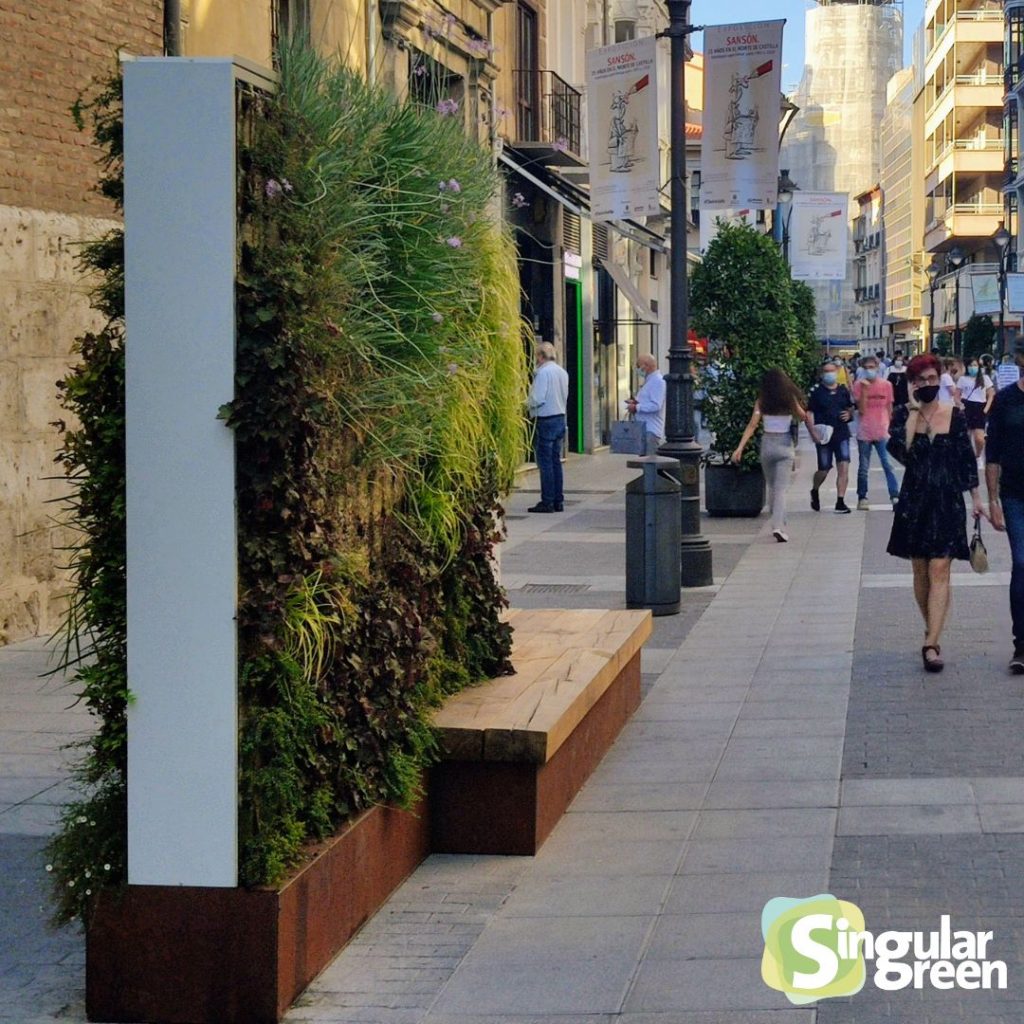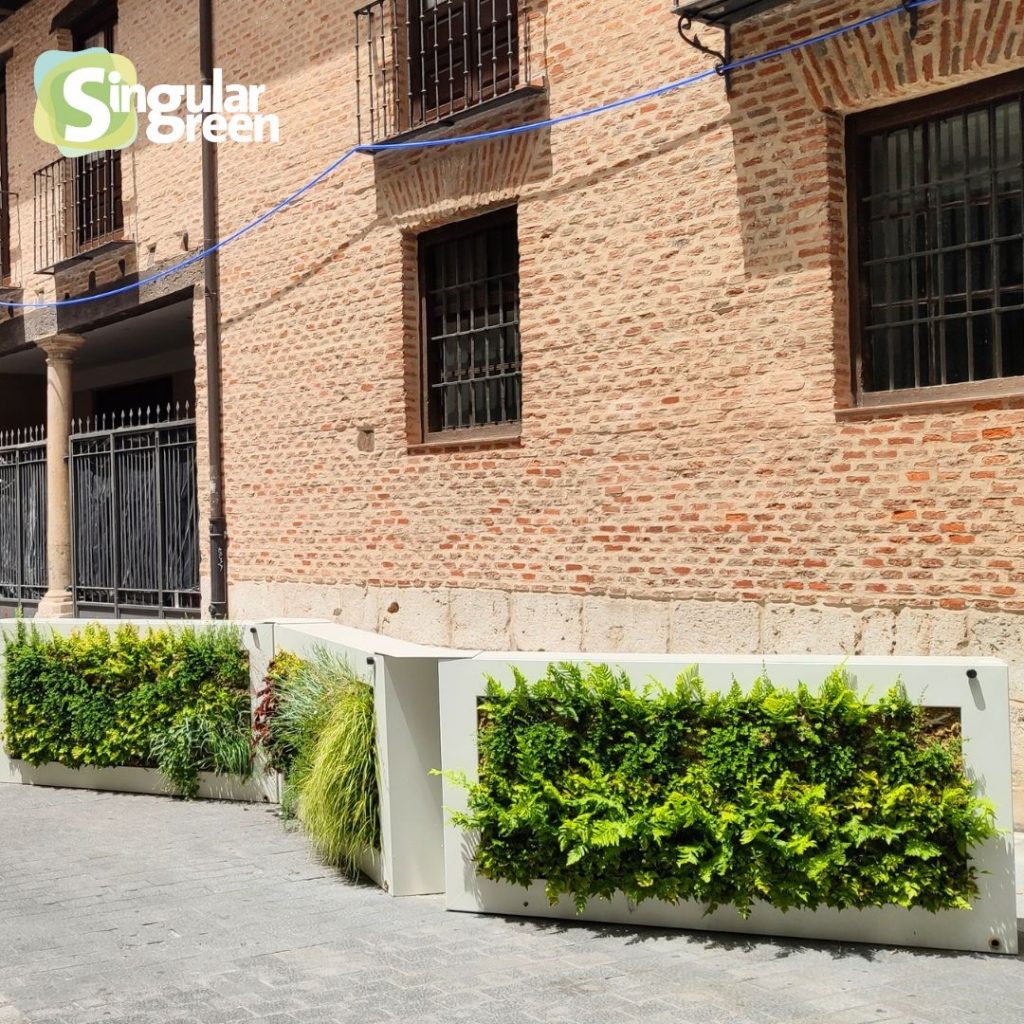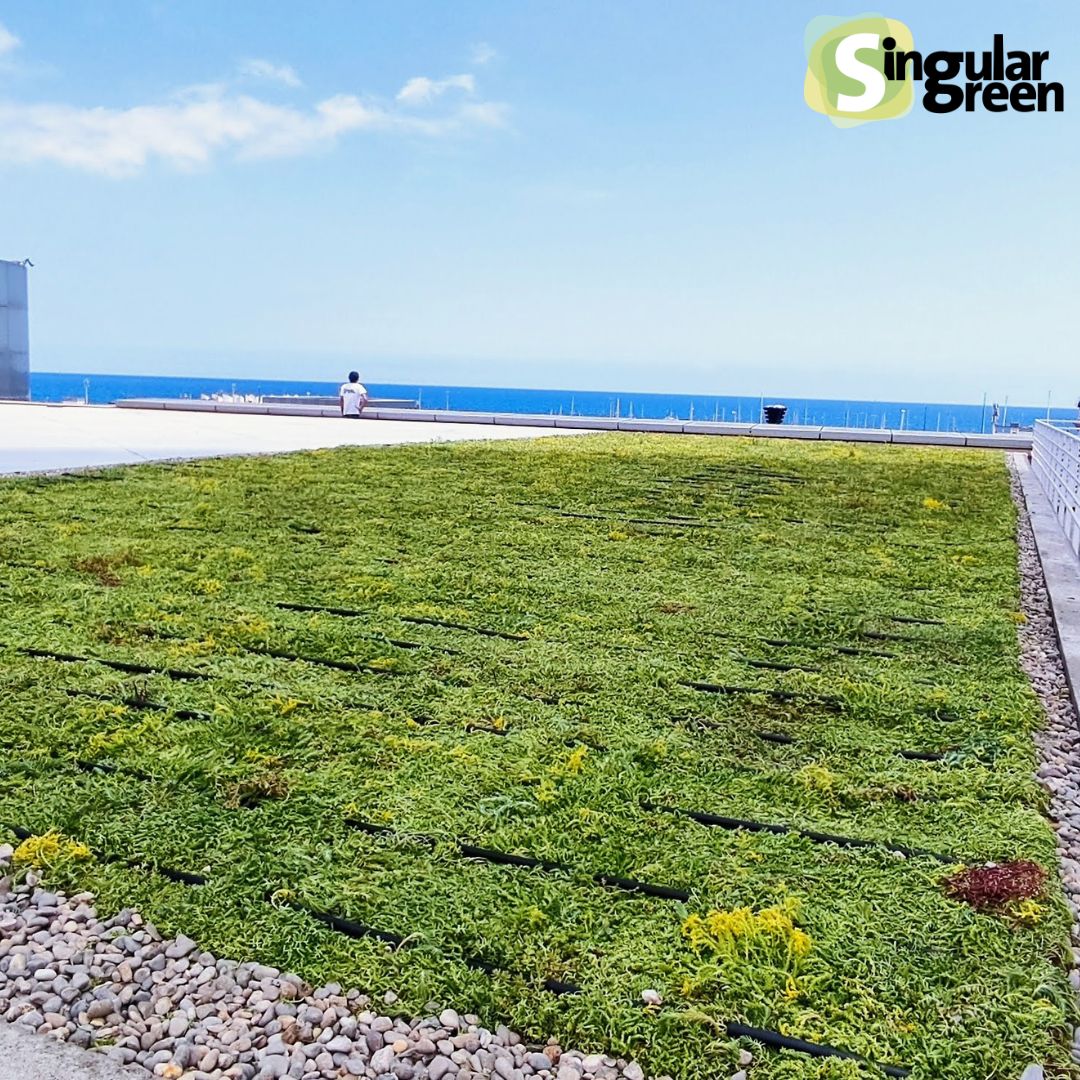Urban landscaping has become a fundamental part of the design of our modern cities.
The term not only refers to the introduction of gardens and parks into urban environments, but also encompasses a range of emerging technologies that transform our relationship with nature in cities.
For us, urban landscaping is and should be an emerging technology of continuous innovation, offering innovative solutions to integrate vegetation into the urban environment in an efficient and sustainable way.


The Evolution of Urban Landscaping: From Gardens to Emerging Technologies
When we think of urban landscaping, the first things that come to mind are gardens, parks and nature included in some way in cities. However, the modern vision of urban landscaping goes much further.
The evolution of urban landscaping has been driven by the need to find sustainable and technologically advanced solutions to improve the quality of life in cities.
Benefits of Urban Landscaping in Modern Cities
Urban landscaping brings numerous environmental, social and economic benefits to cities.
These include improving air quality, reducing urban temperatures, increasing biodiversity and creating recreational and meeting spaces for citizens.
In addition, the integration of green areas contributes to the mental and physical health of urban dwellers.
Emerging Technologies in Urban Landscaping
Technology has played a crucial role in the evolution of urban landscaping.
Below, we explore some of the emerging technologies that are transforming the way we design and maintain our urban green spaces.
Digital Twins for Accurate Planning
One of the most significant advances in urban landscaping is the use of digital twins. A digital twin is a virtual 3D representation of a city that allows for real-time information and simulations.
This type of tool allows us to determine precisely in which streets it is most important to place trees to maximise their cooling effect and improve the quality of life of residents.
Digital Citizen Participation in Urban Design
Integrating citizens in the urban design process is fundamental to the success of any landscape project.
Through digital applications and platforms, citizens can actively participate in the choice of tree species and in the planning of green spaces.
This participatory approach not only improves the acceptance of projects, but also fosters a sense of ownership and care for the urban environment.
Advanced Pruning and Maintenance Techniques
Proper maintenance of urban trees is essential to ensure that trees provide maximum benefit without creating problems.
There are advanced techniques and technologies that allow for more efficient and safer maintenance.
For example, photogrammetry can be used to monitor the condition of trees and detect problems early.
This technology allows for more accurate and effective management of urban trees.
Examples of Successful Implementation of Urban Landscaping
There are numerous examples of cities that have successfully implemented urban landscaping projects.
These experiences show the positive impact that green spaces can have on urban life. From vertical gardens to innovative urban parks, these projects demonstrate that it is possible to integrate nature into our cities in a sustainable and aesthetically appealing way.
We are proud to have participated in one of them, the Urban Green Up, where the project developed a continuous green corridor that crosses the city.
The Role of Trees in Urban Landscaping
Trees are one of the most effective nature-based solutions for improving the quality of life in cities. However, their planting and maintenance must be properly managed to maximise their benefits. Despite available technologies, many cities are still planting and pruning trees in an obsolete manner.
Innovation is needed to adopt new technologies and approaches to improve urban tree management.
Challenges and Solutions in Urban Green Space Maintenance
The maintenance of green areas in urban environments presents several challenges, from lack of resources to the resistance of some citizens. It is crucial to find solutions that allow for efficient and sustainable maintenance of these spaces. The implementation of new technologies and citizen participation are key to overcoming these challenges and ensuring the success of urban landscaping projects.
Conclusion: Towards a Sustainable Future with Urban Landscaping
The future of urban landscaping is promising, with numerous innovations and breakthroughs on the horizon. Integrating emerging technologies and nature-based solutions will allow us to create greener, healthier and more sustainable cities.
Collaboration between citizens, urban designers and authorities is essential to achieve this goal and transform our cities into more liveable spaces connected to nature.







